Introduction to Yangshuo Mountains
Nestled in the heart of Guangxi Province, the Yangshuo mountains stand as a testament to nature’s artistic prowess. This karst landscape, shaped over millions of years by the dissolution of soluble rocks, creates a surreal panorama of towering peaks and winding rivers.
The unique topography of Yangshuo has captured the imagination of artists, poets, and travelers for centuries. These limestone formations, jutting dramatically from the earth, have become iconic symbols of Chinese natural beauty, appearing on everything from traditional paintings to the 20 Yuan banknote.
Yangshuo’s mountains are not just a feast for the eyes; they represent a complex ecosystem and play a significant role in local culture and economy. As tourism has boomed in recent decades, these peaks have become a magnet for adventure seekers and nature enthusiasts from around the world.
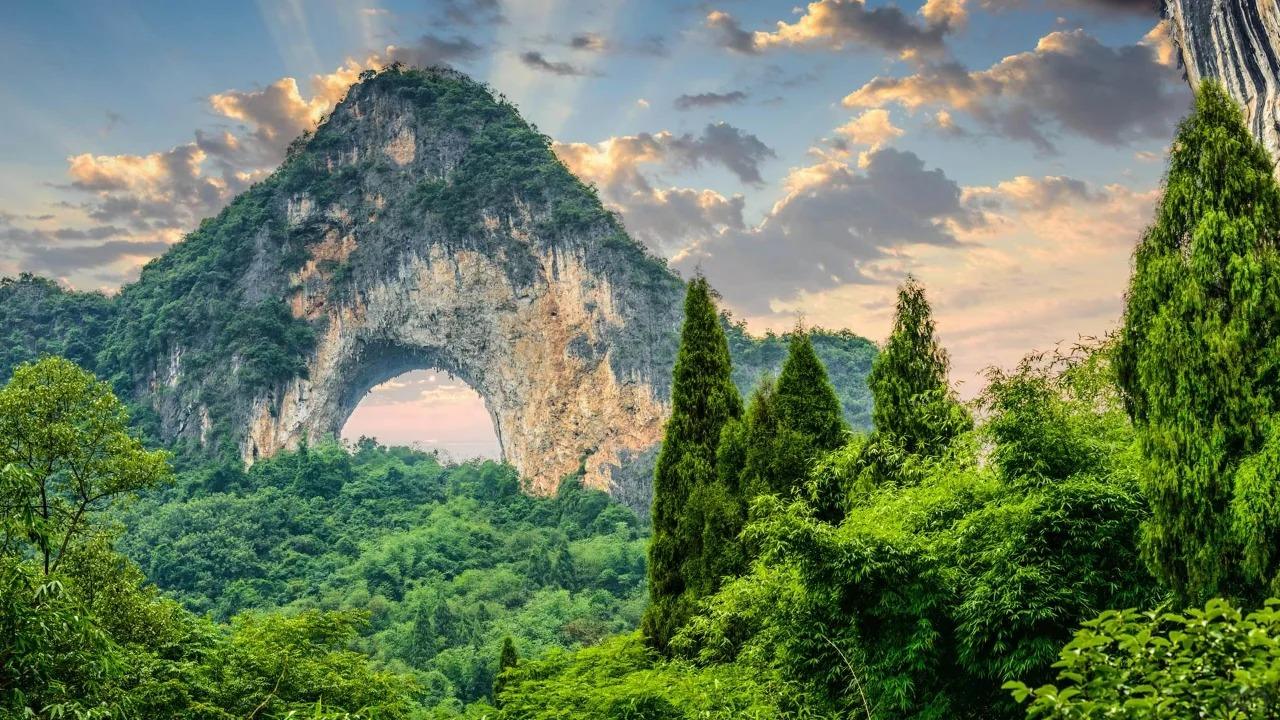
Iconic Peaks and Formations
Yangshuo’s landscape is dotted with numerous distinctive peaks, each with its own character and allure:
- Moon Hill: A natural arch resembling a moon, offering challenging hikes and spectacular views.
- Green Lotus Peak (Bilian Feng): Named for its lotus-like shape, steeped in local legend.
- Xilang Hill: A hidden gem providing panoramic vistas of the surrounding countryside.
- Yangshuo TV Tower Mountain: Easily accessible with rewarding views of the town and beyond.
| Peak | Height | Difficulty | Best For |
|---|---|---|---|
| Moon Hill | 380m | Moderate | Unique geology, photography |
| Green Lotus Peak | 437m | Easy-Moderate | Cultural significance, scenery |
| Xilang Hill | 365m | Easy | Panoramic views, fewer crowds |
| TV Tower Mountain | 290m | Easy | Accessibility, town views |
River Scenery and Water Features
The mountains of Yangshuo are intricately linked with the region’s rivers:
- Li River: Renowned for its sections flanked by karst peaks, inspiring countless artists.
- Yulong River: A peaceful tributary offering serene bamboo rafting experiences.
These waterways have shaped the landscape over millennia, carving paths through the limestone and creating the dramatic scenery we see today. The interplay between mountains and rivers changes with the seasons, offering new perspectives throughout the year.
Spring brings lush greenery and mist-shrouded peaks, while autumn offers clear skies and golden hues, ideal for photography.
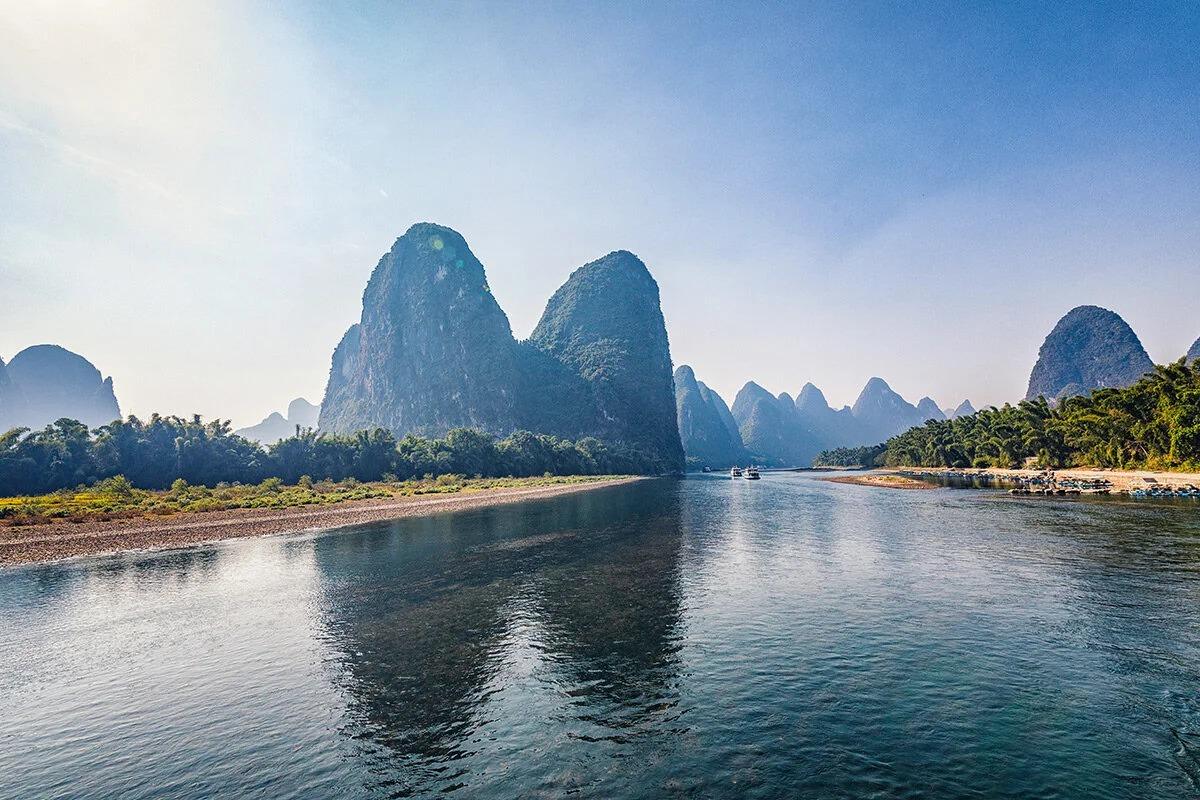
Outdoor Activities and Adventures
Yangshuo’s mountains provide a playground for outdoor enthusiasts:
- Rock Climbing: With over 800 routes ranging from beginner to expert level, Yangshuo is a climber’s paradise.
- Hiking: Trails vary from leisurely walks to challenging ascents, each offering unique views of the karst landscape.
- Cycling: Pedal through picturesque countryside, winding between peaks and along riverbanks.
For photographers, the interplay of light and shadow on the mountains creates endless opportunities. Dawn and dusk are particularly magical, as the sun’s rays paint the limestone in warm hues.
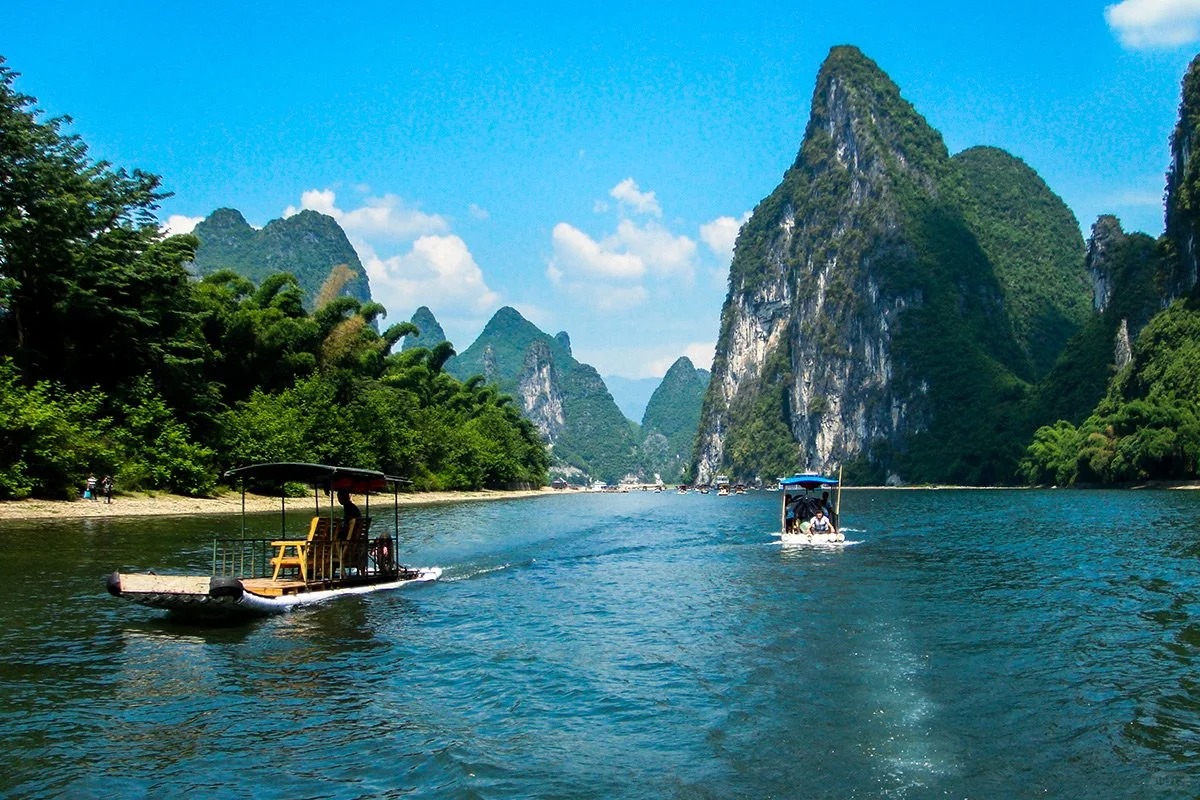
Cultural Significance and Local Life
The mountains of Yangshuo are more than just a scenic backdrop; they are integral to local life and culture:
- Traditional villages nestle in the valleys, their architecture harmonizing with the natural surroundings.
- Farmers cultivate crops on terraced slopes, adapting to the challenging terrain.
- Many peaks are associated with legends, such as the tale of star-crossed lovers linked to Green Lotus Peak.
While tourism has brought economic benefits, it has also led to changes in mountain communities. Traditional ways of life are evolving as younger generations find new opportunities in the tourism industry.
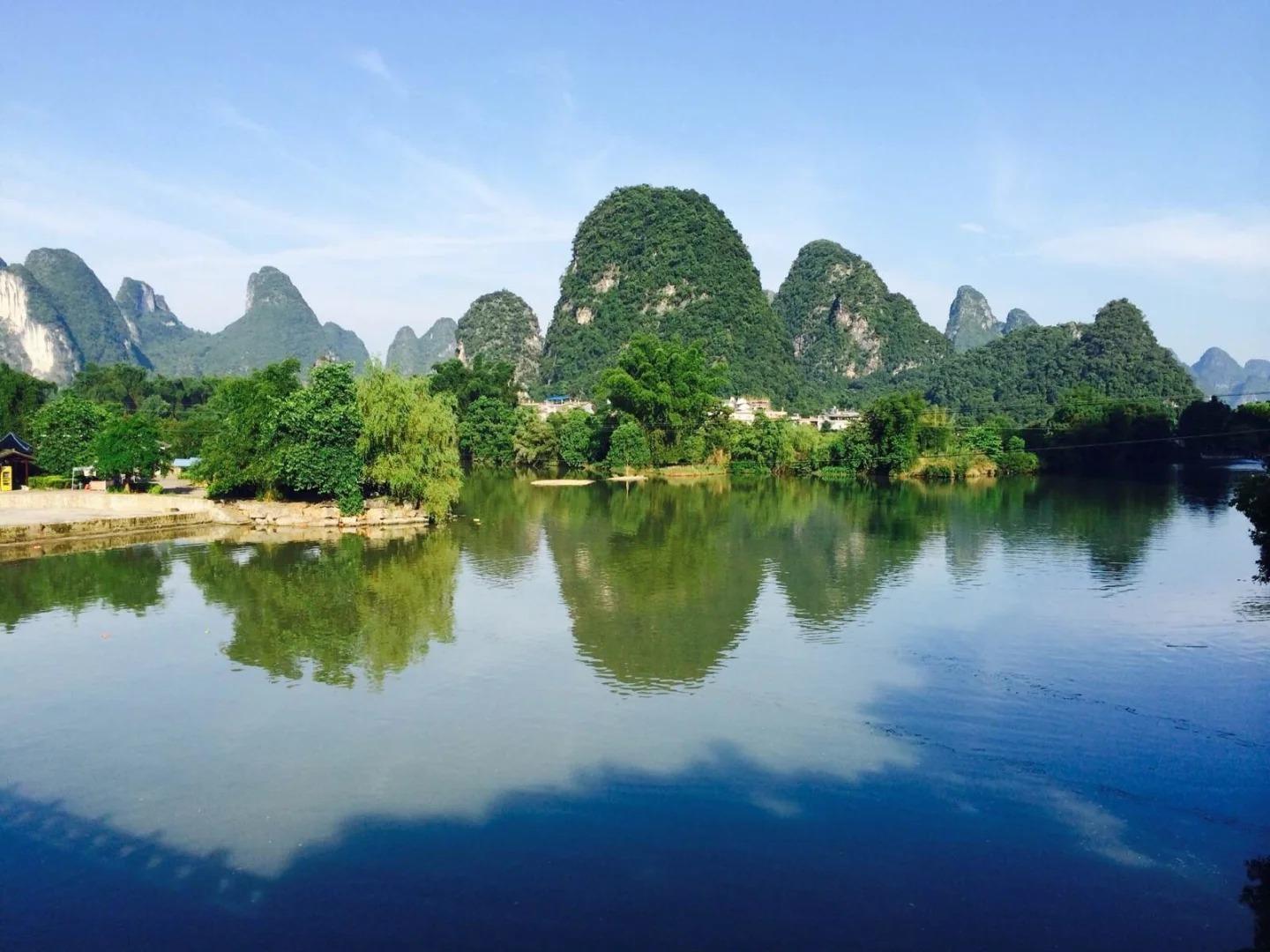
Conservation and Environmental Concerns
Preserving Yangshuo’s unique ecosystem is crucial:
- Several areas have been designated as protected zones or national parks.
- The karst landscape faces challenges from increased tourism and development.
- Sustainable tourism initiatives aim to balance economic benefits with environmental protection.
Local authorities and conservation groups are working to educate visitors and implement responsible tourism practices to ensure the longevity of this natural wonder.
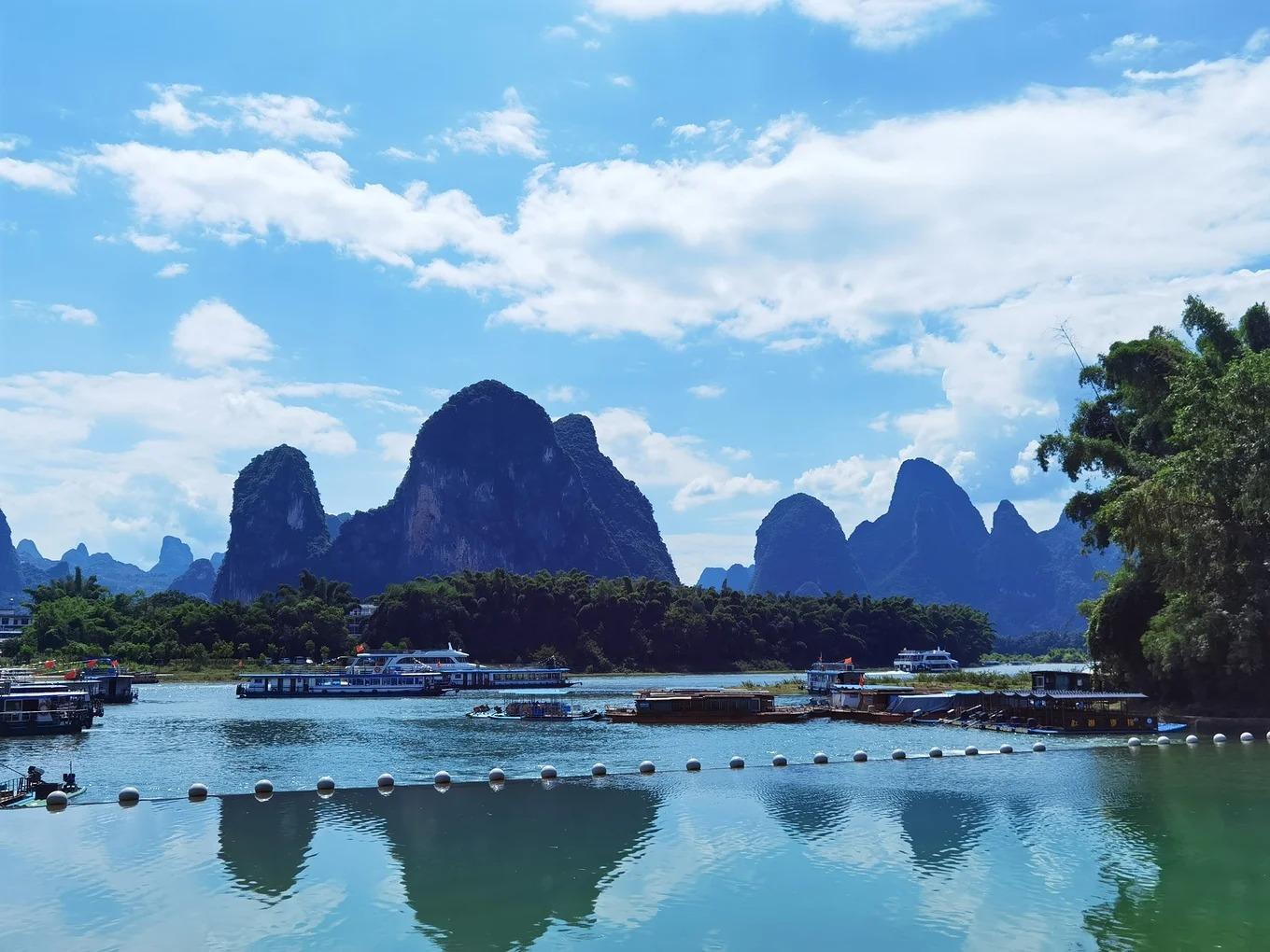
Practical Information for Visitors
To make the most of your Yangshuo mountain experience:
- Best Times to Visit: Spring (March-May) and Autumn (September-November) offer pleasant weather and clear skies.
- Getting There: Fly to Guilin Liangjiang International Airport, then take a bus or taxi to Yangshuo (about 1.5 hours).
- Getting Around: Rent a bicycle or scooter, or join organized tours for more remote areas.
- Recommended Viewpoints:
- Xianggong Mountain for sunrise over the Li River
- Cuiping Hill for sunset panoramas
- Husband Hill for views of Yangshuo town
Safety Tips:
- Wear appropriate footwear for hiking and climbing
- Carry water and sun protection
- Respect local customs when visiting villages
- Follow guide instructions for water activities
Yangshuo’s mountains offer a unique blend of natural beauty, adventure, and cultural richness. Whether you’re scaling limestone cliffs, drifting down serene rivers, or simply marveling at the otherworldly landscape, these peaks provide an unforgettable experience. As you explore, remember that you’re not just a visitor, but a guardian of this extraordinary place. By treading lightly and respecting the environment, you help ensure that future generations can also wonder at the majestic mountains of Yangshuo.






